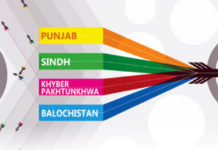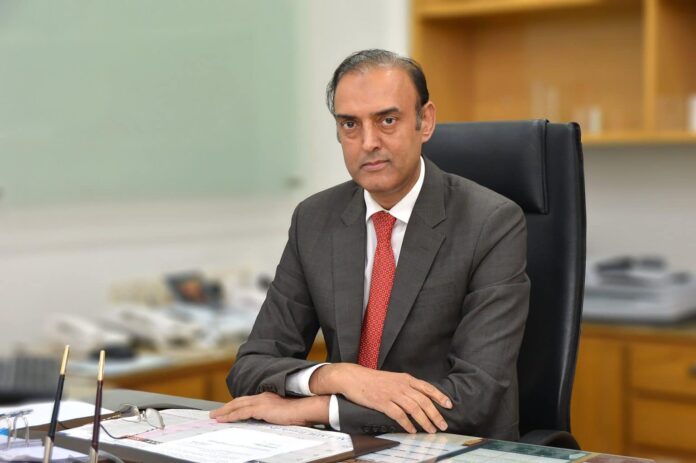KARACHI: The first ever annual report of the Governor of the State Bank of Pakistan (SBP) was released on Wednesday, providing a grim picture of the year that was for Pakistan’s economy.
The report shows that National CPI (NCPI) inflation reached 12.2% in 2022 compared to 8.9% last year, exceeding the government’s target of 8% as well as the SBP’s own inflation projection range of 9-11% for the year.
The governor’s report put some of the blame for the worse-than-anticipated numbers on the fact that inflation has been a global phenomenon amid a significantly challenging global environment marked by global supply chain disruptions and the Russia-Ukraine conflict.
The report
The first of its kind, the report is expected to be a regular feature in which a newly autonomous state bank essentially provides a progress report to parliament. Back in January 2022, the State Bank Act had been amended to provide autonomy to the bank from the finance ministry. The amendments to the act also now required that since the SBP has been granted this autonomy, they submit an annual report to parliament regarding the achievement of the Bank’s objectives, the conduct of monetary policy, state of the economy and the financial system.
The report shed light on a number of important topics, including Governor Jameel Ahmad’s remarks on the financial sector, reflections on the growing role of Islamic Banking in the country, the challenges in terms of monetary policy, and the government’s goal of sustainable, equitable and inclusive economic growth.
The report itself has been divided into four distinct chapters that shed light on:
- The state of the economy and financial system
- Price stability and the conduct of the monetary policy
- Financial stability
- And what measures are being taken to support the government’s economic policies
Takeaways from the governor’s remarks
The report highlights steps taken by the SBP to promote financial inclusion, financial development and the documentation of transactions. These steps include initiatives aimed at increasing remittances and new investments by overseas Pakistanis courtesy of the Roshan Digital Account scheme and other measures; digitizing of payments through Instant Person-to-Person Payments facilitated by Raast; launch of Banking on Equality policy to improve women’s financial inclusion; and introduction of the Digital Bank framework for the setting up of digital banks in Pakistan.
In the report, Governor Ahmad has pointed out that Pakistan’s financial sector has substantial room for development across key indicators which are critical for price and financial stability; along with utilisation of Pakistan’s productive resource.
The governor notes that Pakistan lags behind other developing and emerging economies in terms of financial market development, financial access credit and insurance penetration, and development of capital markets.
“A cross-country comparison reveals that in terms of depth of financial institutions, Pakistan is behind other emerging market peers across Asia, Latin America, Europe and Africa,” reads the report.
It adds that in the case of financial market depth, Pakistan’s relative performance indicates that firms and individuals have very limited financing avenues available to cater to their savings and investment needs. As per the report, Pakistan’s financial market debt Is roughly 0.1 which is significantly lower than Turkiye, Brazil, India and China.
Identifying the reasons behind this lack of depth, the report claims that this outcome is partly the result of recurring macroeconomic instability, dispute resolution mechanisms, the frequent balance of payments crises and the government’s dominant borrower role in the banking system.
Lack of financial inclusion in the country where slightly more than a fifth of the adult population has a bank account (which is lower than that in the EM peer countries), also plays a role in the low depth. “To a large extent, the issue of low financial depth is also reflective of the elusive relationship between a majority of the population and the formal financial services industry,” writes the governor.
He adds that as a result of this many individuals and businesses simply do not approach banks for credit, deposits or other products, such as insurance coverage. Lack of data pertinent to borrowers also alludes banks from lending. Ahmad notes that while credit bureaus are operational in Pakistan their coverage is low compared to other countries.
Islamic banking’s role
An interesting aspect of the report was its acknowledgement of and growth of the Islamic Banking industry in Pakistan. “The Islamic banking industry has made significant contributions to the overall growth of the banking sector during the review period,” notes the SBP governor in the report. “Islamic Banking Institutions (IBIs) have shown more accelerated growth and better performance in recent years as compared to conventional banking segment, which reflects the acceptability of Islamic banking and its potential to promote financial inclusion”.
Islamic banking assets reached around 19.5% of total assets as of end June 2022, while share of deposits reached 20.5%. On a year on year basis, assets and deposits of Islamic Banking institutions were up by 41.4% and 27.0%, respectively by end June, 2022.
The country currently has 22 Islamic Banking Institutions (IBIs) with a branch network of 4,086 branches, including 1,463 windows spread across 129 districts that provide Shariah compliant banking services. IBIs include 5 full-fledged Islamic banking and 17 Islamic banking windows of conventional banks.
























Check the Daily Jumble Puzzle and Cartoon Answers